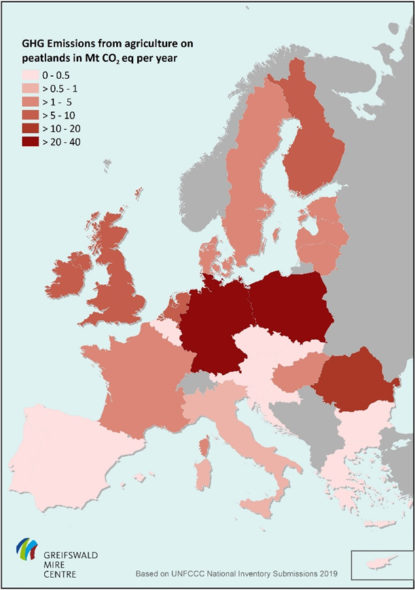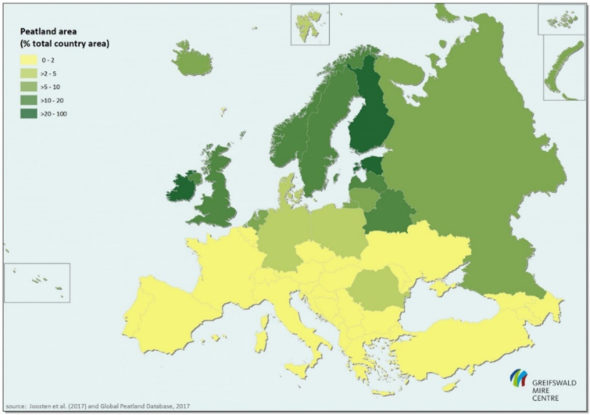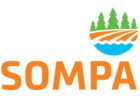Post-2020 Common Agricultural Policy (CAP) must safeguard and stimulate the preservation of carbon-rich soils through protection of peatlands. Functional peatlands are the most space efficient long-term carbon store and sink in our planet’s biosphere.

However, croplands on peat soils are currently large emission sources and they account for more than 25% of total emissions from agriculture and agricultural land use in the northern Europe. A group of leading peatland experts compiled recommendations for climate smart actions based on their recent studies on cultivated peatlands. If we want to continue productive land use on peatlands, a paradigm shift is required involving new concepts, crops and techniques as well as adjustments of the current agricultural policy framework.
“The emissions from managed peatlands can be significantly reduced by raising water levels near to the surface (e.g. by drain blocking, stop pumping in polders), which reduces emissions and protects the remaining peat carbon store,” advises research professor Kristiina Regina from Natural Resources Institute Finland (Luke).
Paludiculture – cultivation of wet peatlands
Paludiculture is defined as productive land use of wet peatlands that stops subsidence and minimises emissions. In contrast to drainage-based agriculture, paludiculture cultivates crops that are adapted to high water levels, such as reed, cattail, black alder and peat mosses.
Large-scale implementation of paludiculture, however, requires agricultural policies to set explicit incentives that ensure that it becomes advantageous for landowners to rewet drained agricultural peatlands and subsequently to maintain them as wetlands.
“It’s hard to reach the EU climate targets without changes in the agricultural policies, since agriculture contributes to such a large proportion of the greenhouse gas emissions,” says research professor Raisa Mäkipää from Luke.
Appropriate climate policy measures, especially in the frame of the Common Agricultural Policy (CAP), must enable farmers to minimize peatland emissions. In Finland, afforestation of the marginal less productive fields on peat soils is also an option to mitigate emissions.
“The policy measures need to be adjusted to regional context so that they are cost effective, acceptable, provide opportunities and do not imply unreasonable hardship for farmers, who are truly the ones implementing the emission reductions”, concludes research professor Heikki Lehtonen from Luke.
Experts concluded that following first actions, in appropriate combinations, can pave the way towards low-emission peatland utilization:
- Guarantee eligibility of farmed wet peatlands (paludiculture) for 1st and 2nd CAP pillar payments
- Phasing out CAP funding for drained peatlands
- Launch incentives for reducing GHG emissions and for supplying other ecosystem services (e.g. nutrient retention, water quality and flood regulation)
- Implementing national peatland carbon credit schemes to facilitate carbon retention and carbon capture
- Promote knowledge transfer, financial and infrastructural support, consultation and establishment of demonstration farms
Policy Brief on ‘Peatlands in the EU – Common Agriculture Policy (CAP) after 2020’ was prepared jointly by experts working in related research projects in the major research institutes in Europe, including Natural Resources Institute Finland (Luke), National University of Ireland (NUI), and Greifswald Mire Centre. In Finland, scientists of the Strategic Research Council project ‘Novel soil management practices – key for sustainable bioeconomy and climate change mitigation (SOMPA)’ contributed to this work.

Maps: Greifswald Mire Centre
